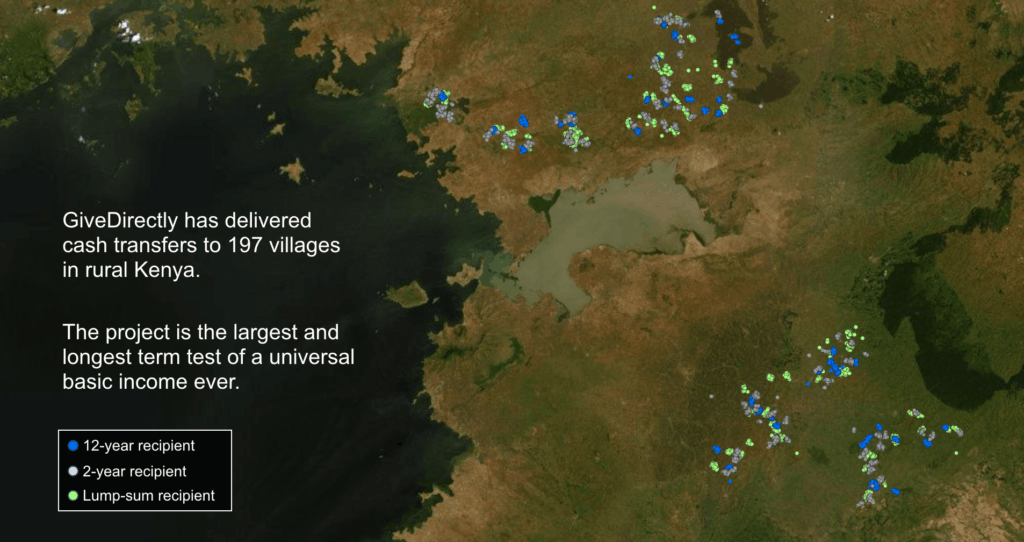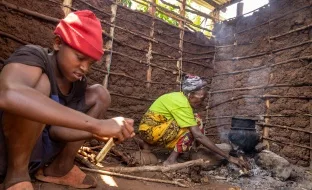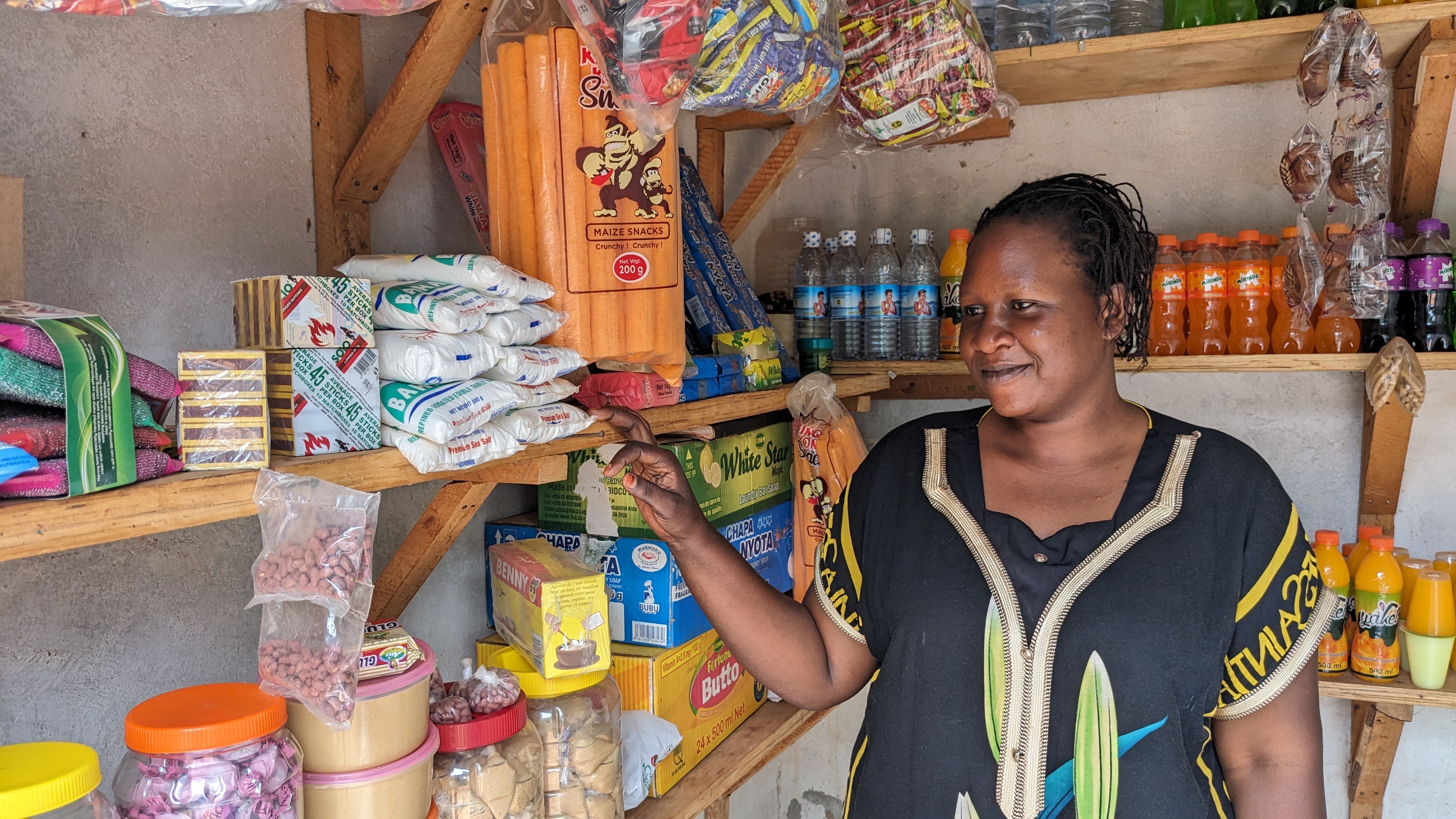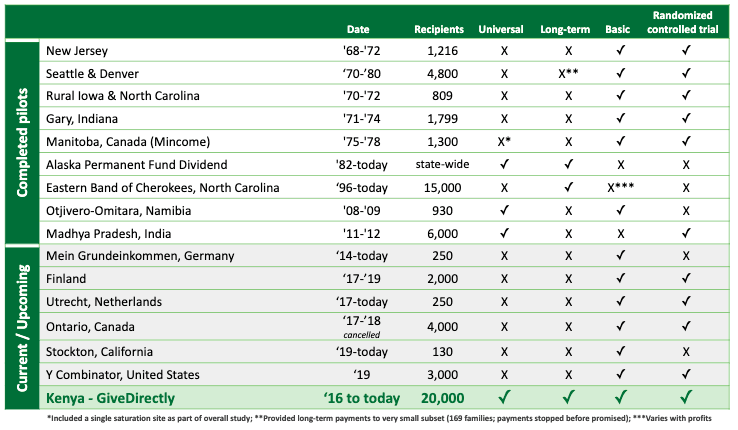GiveDirectly is currently running basic income programs in some of the poorest parts of Kenya, Malawi, and Liberia. Every eligible adult in a target region receives a monthly cash transfer specifically sized to lift them above the local extreme poverty line.
Since 2017, GiveDirectly has led the world’s largest and longest term study to date studying the effects of a Universal Basic Income. As part of this $30M project, we have distributed millions of dollars to 20,000 individuals living across 197 villages, and an additional 100 villages have been surveyed as a control group. Some individuals will receive payments for 12 years, and the full study will last at least that long. Initial results on the effects of UBI during COVID-19 were released in September 2020; additional results from the first endline survey are in progress.

In addition to GiveDirectly’s co-founders, Michael Faye and Paul Niehaus, the research team includes leading economists like Abhijit Banerjee, co-founder of J-PAL and a professor at MIT and Tavneet Suri, Scientific Director for J-PAL Africa, also at MIT. The study design was also led by Alan Krueger, a former Chairman of President Obama’s Council of Economic Advisers and professor at Princeton. Innovations for Poverty Action (IPA), an independent non-profit, will conduct any research-related surveying of cash-recipients and members of the control group. Click below to learn more.








